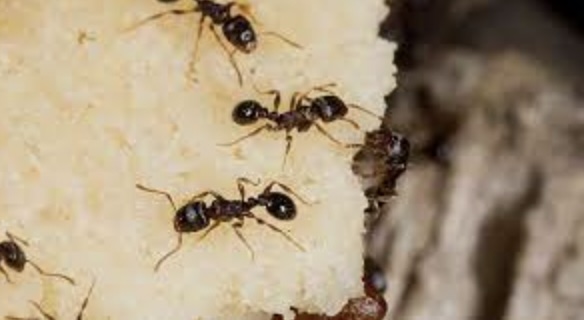There may always be a lot of ants milling around the sidewalks in your Connecticut neighborhood. Trying not to step on any can be an adventure at times. But they may be creating situations that are dangerous to the structure of your home. So you ideally would like to have them gone as soon as possible.
You may want to look up “Wildlife Removal in CT” or “Pavement Ants Removal in CT” on Google or another search engine, but you should see if you can do anything yourself first.
Why Are They Dangerous To Your Home?
When you are walking around and see the telltale signs like the piles of sand or soil in the cracks of the pavement or edges of buildings, you might think that it’s fairly localized and that they are basically going in one direction: down. That’s not the case. If you have ever had an ant farm, you will know that they also burrow out and create tunnels.
Now imagine the network of tunnels being around your home’s foundation. That will weaken the ground under the home and could cause a lot of problems. These tunnels may not be as big as something like a gopher’s, but they can be just as problematic.
How to Identify These Ants
It can be very easy to mistake them for the ones that are known as odorous house ants. Take a look at the ant – if you see two nodes in the front of the abdomen, hair on the end of the abdomen, two spines on their backs, and grooves on the head or thorax, this is a pavement ant.
You will see those piles of sand or soil that we mentioned before. That will help you locate where they have set up their nests. These ants are at their most active after the sun sets, so you’ll likely see them making their way around your place.
The next feature requires a keen sense of smell. If you step on an odorous house ant, it smells like rotten coconuts while the pavement ant smells acidic. It would have been interesting to be around when they first cataloged those smells.
Where Are They Located?
A bit of history first: These ants were stowaways on ships that came to America from Europe in the 1700s and 1800s. They were in the soil that was used as ballast by these sailors. These pests have since spread all over the country over the course of centuries.
One place is right here in Connecticut, though they have been spotted as far as California and Washington State.
While they do set up nests under pavements, they also live under floorboards, gravel pathways, and lawns. They set up new colonies by sending winged ants in swarms during the spring and summer, though heated buildings will give them enough warmth to do this during the fall and winter.
Control
Ideally, you can use bait that has insecticide in it rather than a spray. The only way that you can get rid of the whole colony is to take out the queen, though. If you use a spray, it won’t reach the queen. The bait can be carried to the queen and kill it.
The bait can be sugar or protein or both. That will ensure more ants eat it. The best pesticides are slow-acting, like boric acid, fipronil, and hydramethylnon. Expect it to take around two weeks or so to get the best results.
Try to keep your home free of food crumbs or anything that might attract ants into your home. Always be mindful and act quickly if you see ants.
If you find that after all of this, you are still having problems with these pavement ants or you’re worried that they may have created issues that could affect the safety of your home, you need to enlist the help of professionals. They can do a thorough inspection and make sure that the ants are gone … and also tell you how to keep them out for the foreseeable future.

